Basic information about the field
Area: 11,84 ha
Soil type: Humus rich sandy loam and organic soil.
Soil types are varying in different parts of the field. Is often cultivated as two different growing plots. A protection zone, bordering the river, has been separated from field. The commitment for the protection zone started in 2015.
Crop rotation
2024 A: Barley, RGT Planet, B+C silage grass
2023 Silage grass
2022 Barley; Rödhete and silage grass
Research and experiments
Spring cereal crop variety and fertilizer experiment
Cultivation activities
Cultivation activities
Silage grass
Mönkkö A
18.4.2023 Sowing: Italian rye-grass 10 kg/ha
13.5.2023 Sowing: Italian rye-grass 20 kg/ha
30.6.2023 Silage harvesting, bales, 955,75 kg ka/ha
10.8.2023 Silage harvesting, forage pit, 1112,5 kg ka/ha
18.9.2023 Silage harvesting, forage pit, 1056,9 kg ka/ha
Mönkkö B
30.6.2023 Silage harvesting, bales, 134,83 kg ka/ha
8.8.2023 Silage harvesting, forage pit, 1888,17 kg ka/ha
18.9.2023 Silage harvesting, forage pit, 1056,9 kg ka/ha
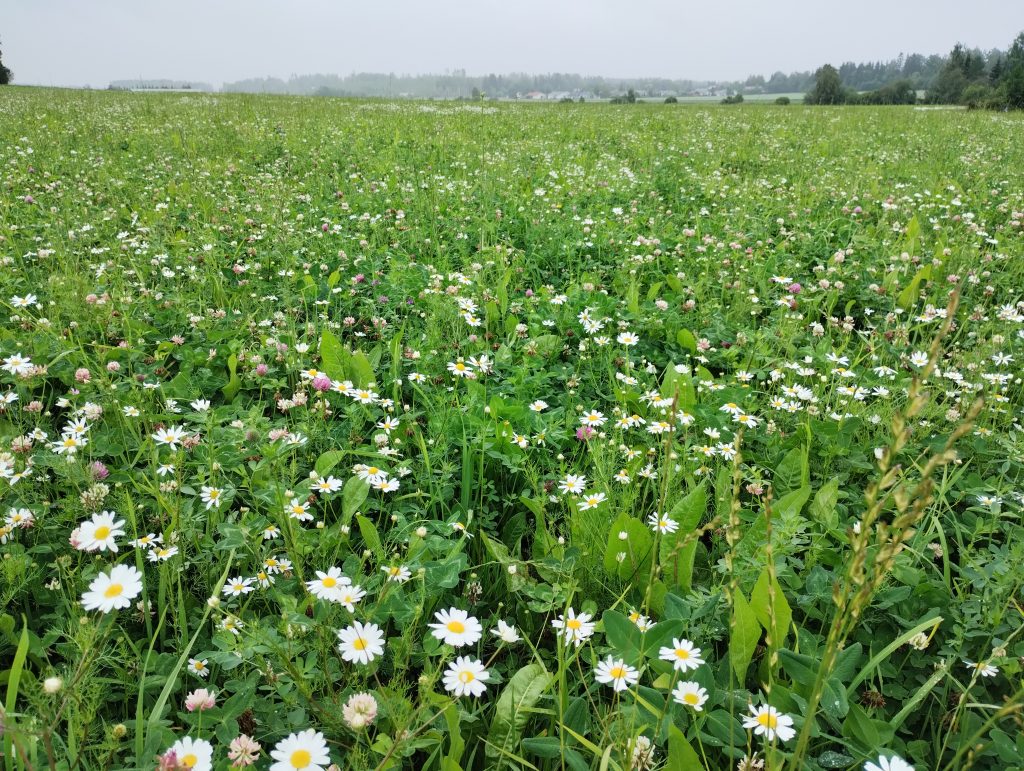
Cultivation activities
Barley, Rödhete (6,21 ha)
6.5.2022 Fertilizer, slurry cow manure 30 tn/ha
9.5.2022 Plowing
15.5.2022 Harrowing
16.5.2022 Disc harrowing
30.5.2022 Sowing hay seed, with rake, Retu-carbon mixture
26.8.2022 Threshing, yield 2300 kg/ha
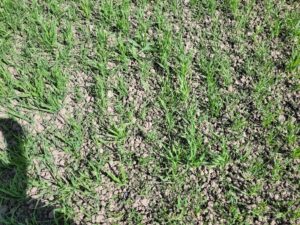
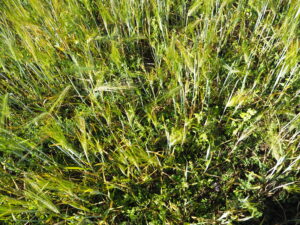
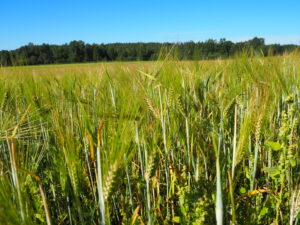
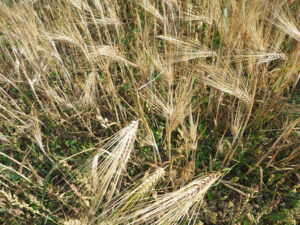
Silage grass (4,54 ha + protection zone grass 0,84 ha)
10.5.2022 Spraying, Amazinc 1.2 l/ha
16.5.2022 Fertilizer, slurry cow manure 20 tn/ha
14.6.2022 Harvesting silage, yield 2600 kg dm/ha
29.7.2022 Harvesting silage, yield 2000 kg dm/ha
24.9.2022 Fertilizer, slurry cow manure 16 tn/ha
Cultivation activities
Barley, Alvari (6,21 ha)
16.5.2021 Evening the soil by harrowing
16.5.2021 Fertilizer, slurry cow manure 20 tn/ha
25.5.2021 Harrowing twice with goosefoot harrow
25.5.2021 Fertilizer to own experiment area and for LUKE’s test batches, Fertilex 6-1-2, for own experiment area 500 – 250 – 0 kg/ha
25.5.2021 Sowing: Barley, Alvari 238 kg/ha
2.6.2021 Rolling
8.6.2021 Re-sowing, about 0,7 ha, RGT Planet 260 kg/ha
16.6.2021 Sowing: Clover for the test batches as cover crop, 20 kg/ha
17.6.2021 Sowing: Mustiala 2021 mixture, 26 kg/ha
10.9.2021 Threshing, yield 483 kg/ha
11.9.2021 Supplementary sowing for grass 10 kg/ha
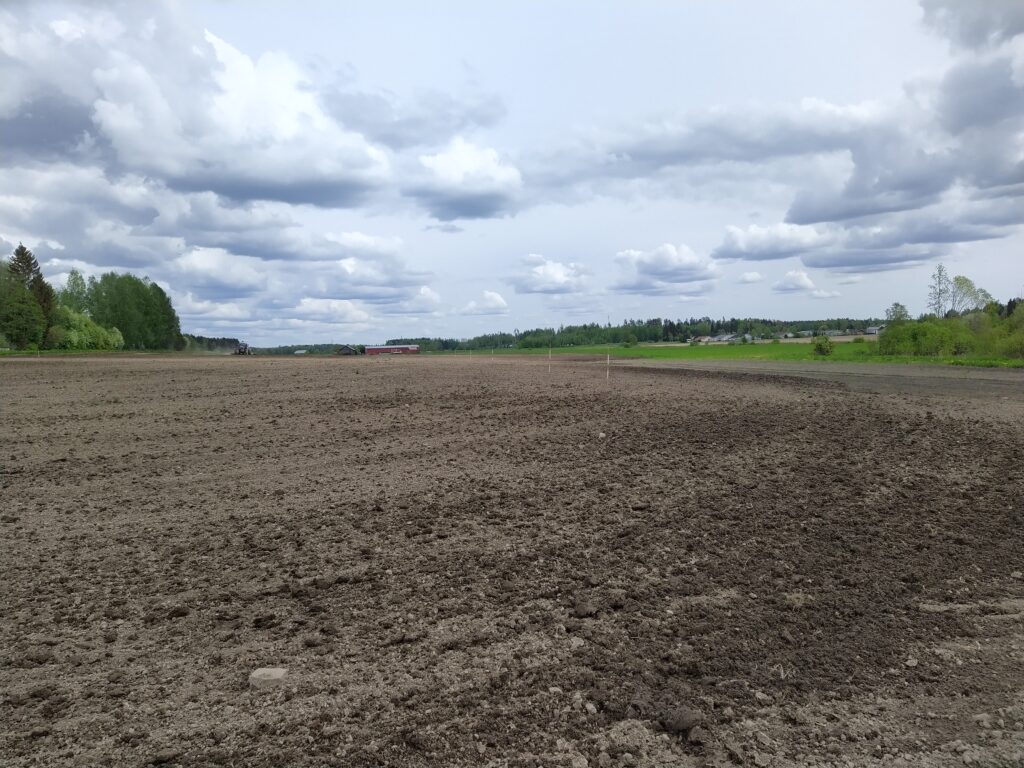
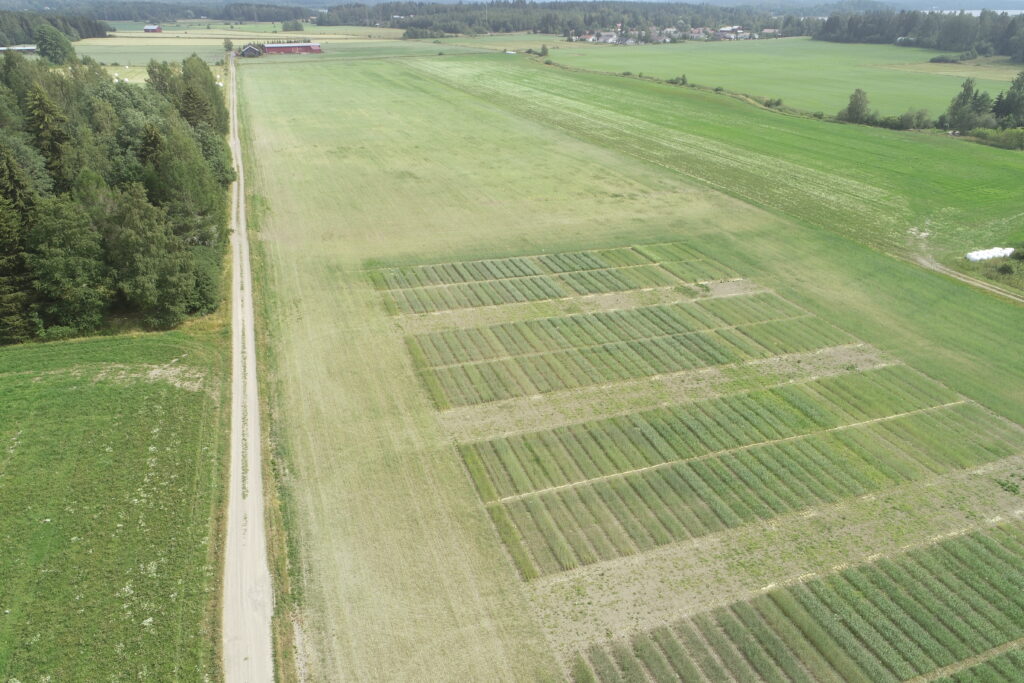
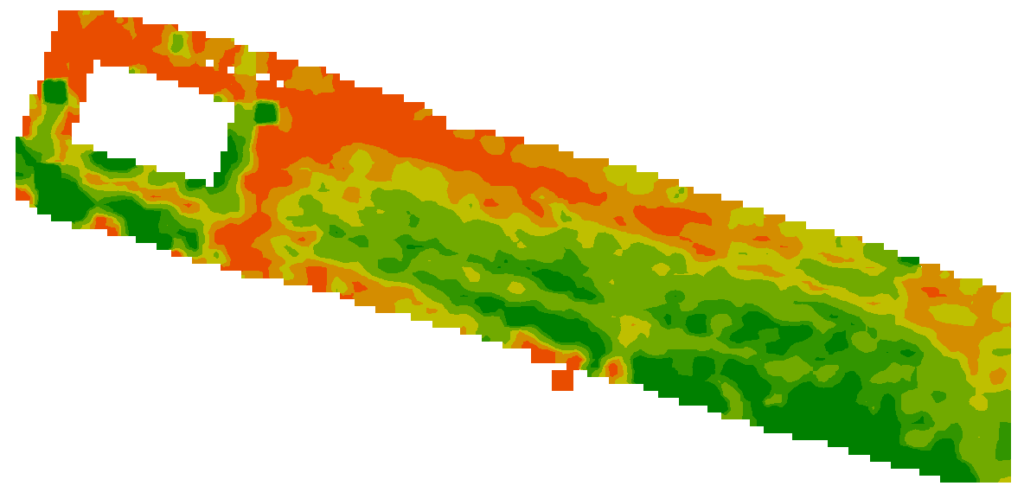
Silage grass (4,54 ha+protection zone grass (0,84 ha)
21.4.2021 Supplementary sowing, Italian rye-grass 12 kg/ha
11.6.2021 Mowing and swathing
15.6.2021 Baling, yield 2766 kg/ha
15.-16.6.2021 Fertilizer, slurry cow manure 28 tn/ha
5.7.2021 Spraying, BioNue 1 ha, 2 l/ha
23.7.2021 Harvesting silage, yield 610 kg dm/ha
9.8.2021 Harvesting silage, yield 1762 kg dm/ha (not grass from protection zone)
Experiment field of spring cereal crops
26.5.2021 Sowing
11.8.2021 Threshing was started (oats Avanti, Niklas; wheat ApuRuso, Lohja; barley Arild and Joutsenkaula)
Cultivation activities
Fava bean: Kontu, Sampo and Louhi
27.4.2020 Evening the soil with farrow
27.-28.4.2020 Harrowing with goosefoot harrow
28.4.2020 Sowing, fava bean, Louhi, 328 kg/ha + under crop English rye-grass 10 kg/ha
28.4.2020 Sowing, fava bean, Kontu, 240 kg/ha + under crop English rye-grass 10 kg/ha
28.4.2020 Sowing, fava bean, Sampi, 140 kg/ha + under crop English rye-grass 10 kg/ha
26.8.2020 Harvesting whole crop silage, about 2,5 ha of the who area
15.9.2020 Threshing, yield 2000 kg/ha
13.10.2020 Plowing
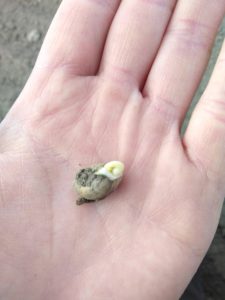
6.5.2020 Fava bean has sprouted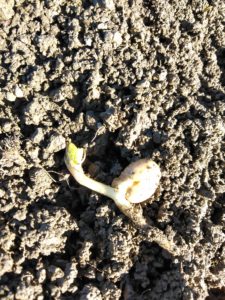
12.5.2020 Slowly but firmly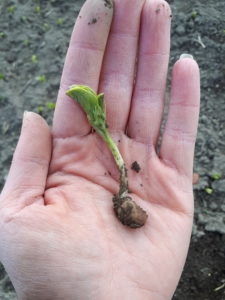
20.5.2020 Fava beans are sprouting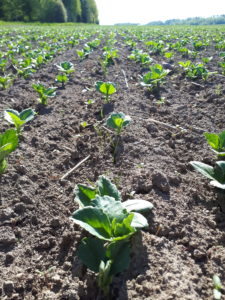
26.5.2020 Fava bean is growing well due to the warm air
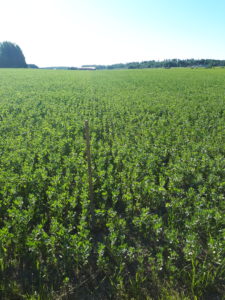
22.6.2020 There are small differences in size between the different fava bean varieties
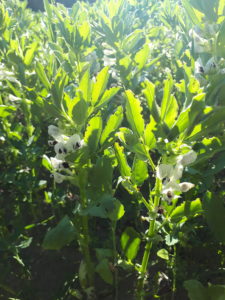
22.6.2020 Fava bean is flowering
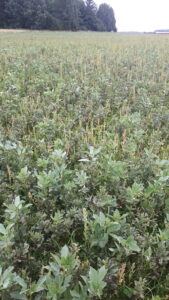
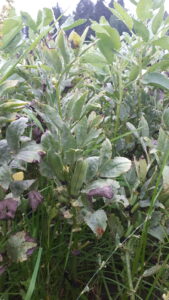
3.8.2020 The growth is low and taken over by the white goose foot
Pollination lane
27.4.2020 Sowing, own seed mixture (persian clover, lacy phacelia and common vetch)
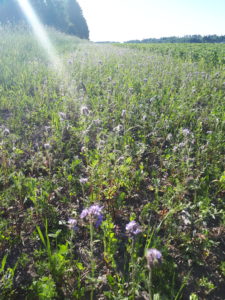
22.6.2020 The pollination lane has finally started flowering
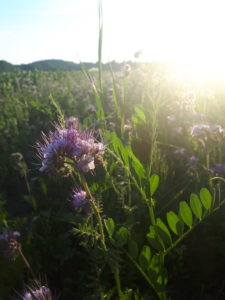
23.6.2020 Lacy phacelia can mostly be detected in the growth. Also common vetch is here and there, but not flowering yet
Oat, Niklas (protection crop)
4.5.2020 Fertilizer, dry cow manure 20 tn/ha+slurry cow manure 20 m3/ha
5.-6.5.2020 Plowing
7.5.2020 Evening with harrow
7.5.2020 Harrowing with goosefoot harrow
7.5.2020 Sowing, oat Niklas 194 kg/ha
2.6.2020 Harrowing weeds, sowing grass seed 22 kg/ha (Mustiala 2019, cumin, mowing grass with clover and tall fescue-clover grass)
11.9.2020 Threshing, yield 3468 kg/ha
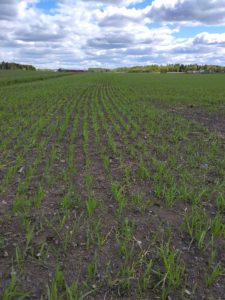
29.5.2020 Oat, Niklas
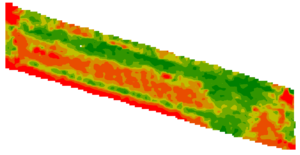
Yield map from the oat part 2020
Protection zone grass
10.6.2020 Mowing
11.6.2020 Baling
Fertility analysis 27.11.2020:

Vocabulary for reading fertility analysis:
Numero= number
Peruslohkotunnus= basic field id-number
Nimi= name
Maalaji= soil type
Multavuus= type of humus
Johtoluku= electrical conductivity
Kationinvaihtokapasiteetti= cation exchange capacity
Kalkitustarve= need for liming
Suositeltava kalkituslaji= recommended lime type
Hehkutushäviö= annealing loss
NIR skannaus= NIR scanning
Yksikkö= unit
Tonni= ton
Vapaavalintainen= free choice
Soil NIR-analysis (27.11.2020)
Sampling line 2020:
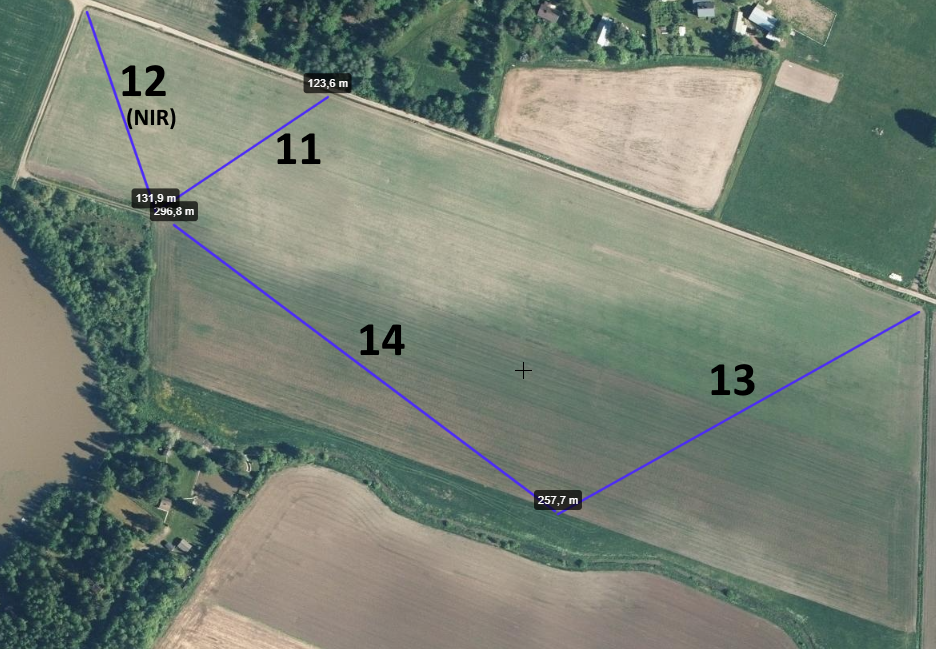
2021 Barley: Alvari and silage grass
2019 (Autumn cereal crop experiment,) oat (protective crop), silage grass
2018 Silage grass
2017 Silage grass
2016 Silage grass
2015 Oat Akseli and grass seed (timothy grass Grinstad, Italian rye-grass Turgo, meadow fescue Kasper, tall fescue Karoliina, red clover SW Yngve, white clover Sonja)
2014 Oat Akseli and spring wheat Quarna
2013 Sugar beet Nexus Cruiser and barley Tiril
2012 Sugar beet Nexus Cruiser and spring rapeseed Trapper
2011 Barley and perennial grass
2010 Perennial grass
